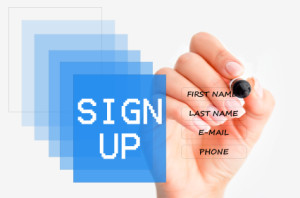by Glen Springer | Oct 7, 2015
 Every call is important, here are strategies and techniques to help secure those 2nd, 3rd, and 4th (and so on) phone calls with potential leads. Obviously a cold call is just the tip of the iceberg when interacting with a new prospect. A question that burns on every sales rep’s mind is: what should I do to get this lead to commit to another conversation?
Every call is important, here are strategies and techniques to help secure those 2nd, 3rd, and 4th (and so on) phone calls with potential leads. Obviously a cold call is just the tip of the iceberg when interacting with a new prospect. A question that burns on every sales rep’s mind is: what should I do to get this lead to commit to another conversation?
In a recent blog we recently, detailed 6 Questions to Ask All New Leads that will help you drive meaningful interactions with prospects, ultimately filling your pipe with better opportunities. In this blog, we will outline 10 B2B sales techniques and strategies that can be used along with those 6 questions to help successfully move opportunities through their buying process.
Once you have gained the actionable prospect information by asking those 6 questions, you need to get them to commit to another meeting. What’s the best approach to set next steps?
We have compiled a list of ten strategies and techniques to accomplish this. There is no single way to address this problem as every lead is unique. However, through direct questioning and technique, you can employ any number of these strategies to successfully move the conversation forward.
Identify what stage of the buying cycle the prospect is at and don’t try and force them to another stage. Give them the opportunity to get there by providing appropriate content.
This is crucial, and should be done for every lead that is not immediately disqualified on a cold call. If you try and set a business proposal meeting with a lead that is barely aware of the existence of a new field of technology, you will quickly find your way to a “no.” Help them along their buying process through your selling techniques and marketing content.
Be polite and professional first and foremost.
Always remain polite in the initial interactions with new prospects, but be wary of trying to create too significant of a relationship too early in the process. Many leads want to understand that you respect that their time is short, their phones are busy, and they want to be in control. To accomplish this, it is helpful to be short, succinct, and direct in your initial conversations, so that the expectation is set early in the opportunity.
Provide all of your contact information
You would think this is a no brainer but it is the standard in sales interactions today to successfully provide information for all means of contact: phone, email, website, etc.
Ask them if there is anyone else that would benefit from communicating with you and seeing your educational information
The more people you can connect with in an organization, the better. You want to get them talking about your solutions, sharing it with others who may be involved with the business process or buying process.
Ask them for a good time for a follow-up conversation
It’s amazing how easy it is to get a second meeting on the books just by simply asking for an available time to have it. If they say they don’t have time this week, ask them about next week. Don’t be so easily dismayed to hang up the phone without having a firm second conversation scheduled.
Ask them for their preferred way to communicate during your next conversation
Some people hate answering emails, others won’t answer their phones unless they are completely unpreoccupied. Give your prospects the opportunity to tell you the way they prefer to communicate.
Make sure you’ve got the right person
Many people will allow you to send them any and all information. Whether they are trying to find distractions from their own work, or if they’re just curious about the space, it is important not to waste valuable time on leads that have no impact on technology implementation, solution service decisions, or buying power.
Give them homework
This can be simple: “Visit our website when you have a moment, our URL is _________” Or, you can provide relevant content for them to digest. Maybe you have demonstration videos that buyers who are farther in their process would benefit from seeing. Whatever tool you use, asking your prospects to review content in between connections is crucial in staying relevant within their consideration set.
Always, always, always finish a conversation with next steps
The first ten suggestions are all directed at successfully accomplishing just this. A conversation without next steps planned gives the opportunity for your prospect to fall into someone else’s pipe before you’ve even successfully engaged them in yours. Time, mode of communication, and task to be completed by both parties – all three of these aspects are crucial in a successful next steps plan.
Know when to not push for a second contact, but rather circle back in a timely fashion.
Sometimes you catch a lead in a meeting, others simply hate cold calls. It is a useful talent to be able to discern when to just let the lead go, and give them another try without requiring anything from them, including listening to your extensive pitch. This should not be used except in extreme circumstances, as we believe every valid target prospect will be willing to engage with you if you provide them content that supports the stage of the buying cycle they are in.
The more techniques and strategies you can employ in your initial contact with a new prospect, the greater your success will be in filling your pipe with quality opportunities and moving more deals to closing.

by Glen Springer | Oct 7, 2015
 Every call is important for B2B sales.
Every call is important for B2B sales.
Here are strategies and techniques to help secure those 2nd, 3rd, and 4th (and so on) phone calls with potential leads. Obviously a cold call is just the tip of the iceberg when interacting with a new prospect. A question that burns on every sales rep’s mind is: what should I do to get this lead to commit to another conversation?
In a recent blog, we detailed 6 Questions to Ask All New Leads that will help you drive meaningful interactions with prospects, ultimately filling your pipe with better opportunities. In this blog, we will outline 10 B2B sales techniques and strategies that can be used along with those 6 questions to help successfully move opportunities through their buying process.
Once you have gained the actionable prospect information by asking those 6 questions, you need to get them to commit to another meeting. What’s the best approach to set next steps?
We have compiled a list of ten strategies and techniques to accomplish this. There is no single way to address this problem, as every lead is unique. However, through direct questioning and technique, you can employ any number of these strategies to successfully move the conversation forward.
Identify what stage of the buying cycle the prospect is at and don’t try and force them to another stage. Give them the opportunity to get there by providing appropriate content.
This is crucial, and should be done for every lead that is not immediately disqualified on a cold call. If you try and set a business proposal meeting with a lead that is barely aware of the existence of a new field of technology, you will quickly find your way to a “no.” Help them along their buying process through your selling techniques and marketing content.
B2B Sales 101: Be polite and professional first and foremost.
Always remain polite in the initial interactions with new prospects, but be wary of trying to create too significant of a relationship too early in the process. Many B2B sales leads want to understand that you respect that their time is short, their phones are busy, and they want to be in control. To accomplish this, it is helpful to be short, succinct, and direct in your initial conversations, so that the expectation is set early in the opportunity.
Provide all of your contact information
You would think this is a no brainer but it is the standard in sales interactions today to successfully provide information for all means of contact: phone, email, website, etc.
Ask them if there is anyone else that would benefit from communicating with you and seeing your educational information
The more people you can connect with in an organization, the better. You want to get them talking about your solutions, sharing it with others who may be involved with the business process or buying process.
Ask them for a good time for a follow-up conversation
It’s amazing how easy it is to get a second meeting on the books just by simply asking for an available time to have it. If they say they don’t have time this week, ask them about next week. Don’t be so easily dismayed to hang up the phone without having a firm second conversation scheduled.
Ask them for their preferred way to communicate during your next conversation
Some people hate answering emails, others won’t answer their phones unless they are completely unpreoccupied. Give your prospects the opportunity to tell you the way they prefer to communicate.
Make sure you’ve got the right person
Many people will allow you to send them any and all information. Whether they are trying to find distractions from their own work, or if they’re just curious about the space, it is important not to waste valuable time on leads that have no impact on technology implementation, solution service decisions, or buying power.
Give them homework
This can be simple: “Visit our website when you have a moment, our URL is _________” Or, you can provide relevant content for them to digest. Maybe you have demonstration videos that buyers who are farther in their process would benefit from seeing. Whatever tool you use, asking your prospects to review content in between connections is crucial in staying relevant within their consideration set.
Always, always, always finish a conversation with next steps
The first ten suggestions are all directed at successfully accomplishing just this. A conversation without next steps planned gives the opportunity for your prospect to fall into someone else’s pipe before you’ve even successfully engaged them in yours. Time, mode of communication, and task to be completed by both parties – all three of these aspects are crucial in a successful next steps plan.
Know when to not push for a second contact, but rather circle back in a timely fashion.
Sometimes you catch a lead in a meeting, others simply hate cold calls. It is a useful talent to be able to discern when to just let the lead go, and give them another try without requiring anything from them, including listening to your extensive pitch. This should not be used except in extreme circumstances, as we believe every valid target prospect will be willing to engage with you if you provide them content that supports the stage of the buying cycle they are in.
The more techniques and strategies you can employ in your initial contact with a new prospect, the greater your success will be in filling your pipe with quality opportunities and moving more deals to closing.
by Carol Springer | Sep 8, 2015
Content marketing is making huge strides in the sales process. Why? It is effective.
Content keeps people engaged without sales calls and content is scientifically better at impacting people. You may already know that videos have a higher retention rate than text, but did you know that stories trigger the brain more than just facts and figures. It is recommended to incorporate story telling into marketing in order to relate to your audience, appeal to emotions and engage their brain more.
The idea behind story telling is to show not tell. When using facts and figures to portray an idea or product you will only engage two parts of your reader’s brain, the Wernicke’s Area (language comprehension) and the Broca’s Area (language processing). Using stories you can trigger multiple areas of the brain by describing the surroundings, Motor Cortex (movement), Sensory Cortex & Cerebellum (touch), Olfactory Cortex (scents), Auditory Cortex (sounds) and Visual Cortex (colors and shapes). By triggering more areas of the brain you are making it more likely that your audience will remember your content.
It is easy to learn how to market a product through storytelling.
There are 5 key steps to telling a successful story:
- Get Personal – connect with your audience emotionally. Appeal to the pains they may be experiencing without your solution.
- Avoid Clichés – they have minimal impact and are more likely to drive people away than engage them.
- Avoid Complex Language – keep your story conversational to create a more enjoyable experience rather than overwhelming your audience.
- Be Relatable – add meaning for the audience.
- Be Descriptive – take advantage of describing scenes in order to activate more areas of the brain in order to be more memorable.
In order to successfully engage with the audience you also need a hero they can connect with 5 things the hero must do in order to engage your audience:
- Sets out to achieve a goal.
- Butts heads with an antagonist or a problem that needs to be solved.
- In order to conquer the hero must make a transformation.
- Finds a mentor with resources.
- The hero prevails!
 In order to practice what we preach we wrote a story about ‘John’ who is struggling to maintain sales. This is just one example of how to market a product with storytelling. Continue reading in order to learn what actions John takes to alleviate his sales woes.
In order to practice what we preach we wrote a story about ‘John’ who is struggling to maintain sales. This is just one example of how to market a product with storytelling. Continue reading in order to learn what actions John takes to alleviate his sales woes.
John sits at his desk, a nearby copy machine whirrs, and the clock chimes 8 times. It’s the start of a new work day. The same daunting task looms before him as it had for days and weeks and months.
John needs a way to sell, market and close deals efficiently and cost effectively. As he braces for the chaos that is about to begin, he glances over at the stainless steel framed photograph of his family. It has been weeks since he has made it home for dinner. He is lucky if he makes it home to tuck them in.
As owner of the company John has many functions. His days are filled with company operations, client management, proposal creation and employee management. Lately his time has been devoted to hiring and training sales reps. Due to the nature of the industry, the sales process is long, which makes the training process longer.
Last month John had to replace their last sales rep because goals were not being met. John has since picked up the sales calling while training the new sales rep. Before John picks up the phone for his first round of calls he runs his fingers through his graying hair and wishes there was an easier way to sell.
This led John down a rabbit hole of internet searches for a sales and marketing solution. What stood out as the best option for John was outsourcing.
Fast forward two months.
John is sitting in a conference room filled with people determined to cure his sales and marketing pains. They previously mined John’s company for existing content and learned the sales process. These people were now going to change the selling process and with John’s help, create fresh content.
Outsourcing and how to market a product is new to John and he is nervous it won’t work. In this monochromatic room, tan walls and brown furniture, he tries to turn his fears and doubts into confidence. If this is successful the ROI will be substantial, not to mention the time and money that will be saved by not having to hire new sales reps every six months.
The outsourcing team created content to address frequently asked questions. As John supplied information for content he quickly realized that each piece had a specific purpose within the sales process. Content was not being created solely for marketing; it was being created with sales strategy in mind.
After two days with the sales and marketing outsourcing team John was feeling confident. Two weeks following content creation, cold callers hit the phones and pushed the first wave of content. Using cold callers lowered the cost of calling for John and increased the volume of calls made.
Through cold calling and trackable content each prospect was scored. The scoring made it possible for John’s heavy hitting sales person to focus on prospects that showed interest. John was still the closer and was brought in early to guide buyers through the sales process. Although John’s initial headaches were gone he had a new one.
Cold calling, content nurturing and focusing on interested leads meant John was working to close more deals than ever before. Most of his calls involved explaining their solution and he was feeling like a broken record. John was getting involved too soon. John wondered, “Is there a way to get people the right information without getting tied up on the phone?”
He called his sales and marketing outsourcing team and explained his challenge. They proposed to automate the sales process with content. Together they created headshot, demo and whiteboard videos in order to clone John and get the information in an easily shareable form.
Now, sales reps could send prospects pertinent information through a marketing automation platform. The data was tracked and if the content was viewed the prospect could move to the next step in the sales process.
John’s time was further leveraged by bridging the information gap with content. He was spending less time involved in the sales process and the company was working more deals than ever. John was working less hours and spending more time with his family.
Today John sits at his desk, sipping coffee while he views marketing automation reports. His reports show that two clients viewed videos on how to calculate ROI. Today is the day to get them to buy. Before picking up the phone, John smiles to himself and thinks, “Two sales a day and only two calls. Not too bad.”
To learn more about how to market a product with content, check out these blogs:
Get Prospects to Take Action: Content Variety
How to Guide B2B Prospects through the Sales Cycle with Content
by gabriel_sales | Jul 9, 2014
 Many B2B companies today are searching for solutions to generate more leads and are considering marketing automation.
Many B2B companies today are searching for solutions to generate more leads and are considering marketing automation.
For some companies, this has meant venturing into the fast-paced and complex world of B2B content marketing. And while almost any content you produce can’t hurt, simply throwing content on your website and waiting for leads to come in is no longer enough. To succeed and thrive in 2014, you need digital tools that help you manage and streamline your sales and marketing process from start to finish.
One tool that many B2B companies are leveraging with great success is marketing automation. The exact features of these platforms vary somewhat from vendor to vendor, but for the most part, they all help you track and monitor your prospects engagement along various stages of the B2B sales cycle.
In terms of content specifically, here are three ways marketing technologies increases the effectiveness of B2B content marketing.
1. Allows you to track content engagement by prospect.
One of the most beneficial features of marketing automation is the ability to measure content engagement by prospect. With a normal analytics solutions, like Google Analytics or WordPress Stats, you can only see the number of people who clicked on a link or watched a video. With marketing automation, each prospect that visits your site is ‘cookied’, and their subsequent activity and engagement on your site is tracked. This means you will know that it was ‘John S. from ABC Company’ that read your blog, rather than just some anonymous visitor. This type of data allows you to see when specific prospects have shown enough interest to motivate a follow-up email or phone call to move the deal forward.
2. Enables you to keep track of and nurture not-yet-ready-to-buy prospects.
Research has shown that only 5% of B2B prospects are ready to buy at any given time. Many B2B companies today do not have a strategy to deal with the other 95%; they simply discard them as ‘not interested’. However, by nurturing your leads with ‘light’, educational content every once in a while, you can often find new interest (and deals) from leads you generated six months or a year ago. Marketing automation helps you in the nurturing process by giving you a place to track and manage your prospects and their content engagement on an ongoing basis, rather than just campaign by campaign. For example, if a prospect dropped off or ‘went dead’ just before your proposal stage but reengages six months later, you can pick up right where you left off because you have all the data you need in front of you.
3. Allows you to use analytics to refine and improve your content and sales process.
One of the most valuable things marketing automation provides is data. Using the platform’s analytical features, you can track and monitor engagement at a more detailed level in order to understand when and how to improve. For example, some platforms allow you to not only see when a video was watched, but also how long it was watched for. This way, you can see if a lot of your prospects are dropping off at the same place, and know that you need to refine that piece of your message.
For more on how marketing technologies can benefit the B2B sales process, you can read 3 Tips for Success from an Outsourced Marketing Automation Provider. Feel free to contact us with any questions.
by gabriel_sales | Mar 12, 2014

In today’s complex world of digital marketing, web forms or lead-capture forms seem relatively simple. However, as lead capture forms are tied directly to conversion, they should not be overlooked.
Here are 6 tips for better web form conversion:
1. Don’t ask for their life story.
Asking for too many details is the number one complaint of online buyers when completing web forms. The time issue is obviously a factor here, so you need to think about how much time you are asking your prospect to spend to get what they want from you (e.g. a phone call, white paper, etc.). How much time is a white paper worth to you? Additionally, as we are in an age when privacy and information security are of paramount concern, you need to be sensitive to the fact that you are asking for details your prospects wish to remain private. Bottom line: don’t ask for anything that isn’t absolutely critical to your sales process.
2. Don’t ask for details you already have.
If you are using a marketing automation platform during your digital marketing process, at some point, you will know a few things about your prospect. If your prospects have to reenter all of their contact details and basic company information every time they want to engage with you, they will likely get annoyed. To avoid this, you can use progressive profiling (a feature of your marketing automation platform), which allows you to “set up iterative forms that enable you to designate which questions appear based on what you already know about a particular lead” (Hubspot).
3. Make autoresponses more personal.
Because of marketing automation and tools like this, we now live in a world of automation. And as we become more and more internet savvy, we are getting better at deciphering an autoresponse from a genuine human interaction. For B2B sales where emotional connection plays a larger role, the more human your company is perceived to be, the better. In terms of autoresponder emails, you can seem more human by timing the autoresponse to come a while after the form has been completed, rather than instantly. For example, if someone fills out a form at 9 p.m., have the autoresponse come the next morning, when it makes more sense for someone to be sending a business related email.
4. Trade clear value in exchange for form submission.
It is time to stop with the “fill out this form to sign up for our newsletter” requests. It doesn’t matter who your company is, a company newsletter is not valuable content. If you want people to take the time to fill out your form and trust you enough to give you their personal information, you need to offer concrete value on your end. This goes beyond just saying, “Fill out this form for our new white paper.” You need to offer the value upfront by saying something like, “Learn 10 Ways to Improve Lead Quality” or “Fill Out this Form to Learn the Value of SaaS for Compliance”. By stating the value specifically, your prospects will be much more likely to engage.
5. Use dynamic content to display different content if form completed.
Along the same lines of progressive profiling, if you already have the information you need about a prospect, you shouldn’t be asking them to fill out more web forms. You can set up your marketing automation platform to display different content (e.g. a banner ad) for prospects you already have information on.
6. Split test number of forms and number of fields.
To make sure your web forms are converting at the rate you want, you should do some basic split testing. Testing the number of forms and the number of fields can both yield insights that will help you further improve conversion rates. For instance, you may find that by taking away two extraneous fields, your conversion rate doubles. Split testing will let you know what works and what doesn’t.
For more tips on improving conversion, read 5 Tips for Building Landing Pages that Convert. Feel free to contact us with any questions.
by gabriel_sales | Feb 28, 2014
Marketing Automation may prove to be the way to save companies leads and money
Everybody wants more leads.
In a recent marketing survey from BuyerZone, it was found that 56% of B2B companies strongly disagree with the statement that they’re getting enough leads. The same survey found that 45% of B2B companies have been increasing their lead generation budget year after year.
There are several reasons why this is happening. The first is that cold calling is about half as effective as it used to be, with call-to-connect ratios dropping by 50% or more in recent years. Cold calling still works for lead gen, but it costs twice as much to achieve the same results. Another reason many B2B companies think they need more leads is that they don’t have a system in place to effectively work and manage the leads that they already have.
The BuyerZone survey found some interesting relationships between B2B companies’ use of technology and their perception of lead volume and quality:
“B2B marketers who agree with the statement that the leads they receive are of reasonable quality are:
- More likely to be using a CRM (89%)
- Use marketing automation (53%)
- Have an understanding that they’re getting enough leads (53%)
Compare that to those who disagree that the leads they receive are of high quality and you see that only:
- 78% use a CRM system
- 29% use marketing automation
- More than 90% are adamant that they are not getting enough leads”
Looking at the data, it seems many that companies that use a CRM in conjunction with a marketing automation system receive higher quality leads and therefore feel that they need less of them to be successful. Conversely, companies that feel they do not have the lead volume or lead quality they need are much less likely to use both a CRM and marketing automation platform in their lead generation efforts.
To us, this makes a lot of sense. If a company does not have a CRM and/or marketing automation system, they likely are not tracking their leads or nurturing them in any way. With no visibility into their leads’ web activity and engagement with their marketing content, how would these companies know whether or not they have enough leads or what quality they are?
The lesson to be learned? BuyerZone explains:
“In a nutshell, while the cost of CRM and/or Marketing Automation isn’t insignificant, it might end up saving companies money in the end.”
By leveraging the right technologies, you can eliminate the constant lead quantity problem by replacing it with a solution that improves lead quality. This way, you can stop spending more and more on lead generation and can instead focus resources on nurturing leads you actually know are interested.
To learn more about sales pipeline management and lead nurturing with the use of marketing technologies, read “An Alternative to Getting More Leads in 2014”. Feel free to contact us with any questions.
 Every call is important, here are strategies and techniques to help secure those 2nd, 3rd, and 4th (and so on) phone calls with potential leads. Obviously a cold call is just the tip of the iceberg when interacting with a new prospect. A question that burns on every sales rep’s mind is: what should I do to get this lead to commit to another conversation?
Every call is important, here are strategies and techniques to help secure those 2nd, 3rd, and 4th (and so on) phone calls with potential leads. Obviously a cold call is just the tip of the iceberg when interacting with a new prospect. A question that burns on every sales rep’s mind is: what should I do to get this lead to commit to another conversation?


 Every call is important for B2B sales.
Every call is important for B2B sales.


